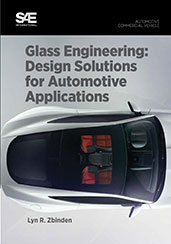Technical Paper
Update on A-Pillar Overflow Simulation
2018-04-03
2018-01-0717
The management of surface water flows driven from the wind screen by the action of wipers and aerodynamic shear is a growing challenge for automotive manufacturers. Pressure to remove traditional vehicle features, such as A-Pillar steps for aesthetic, aeroacoustic and aerodynamic reasons increases the likelihood that surface water may be convected over the A-Pillar and onto the front side glass where it can compromise drivers’ vision. The ability to predict where and under which conditions the A-Pillar will be breached is important for making correct design decisions. The use of numerical simulation in this context is desirable, as experimental testing relies on the use of aerodynamics test properties which will not be fully representative, or late-stage prototypes, making it difficult and costly to correct issues. This paper provides an update on the ability of simulation to predict A-Pillar overflow, comparing physical and numerical results for a test vehicle.

